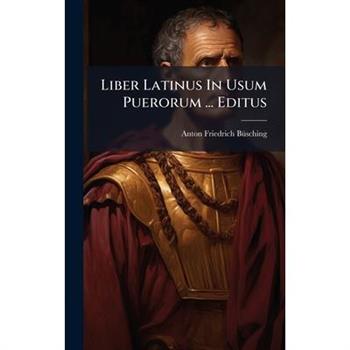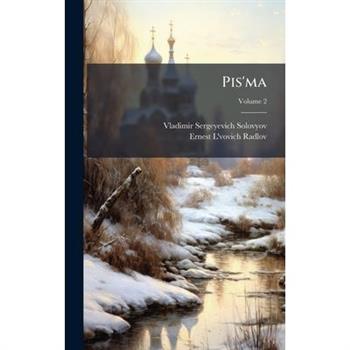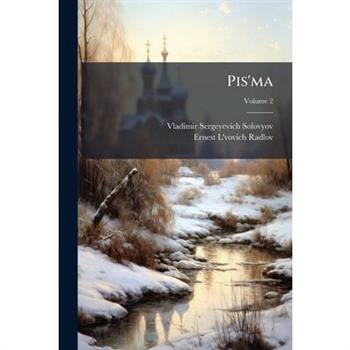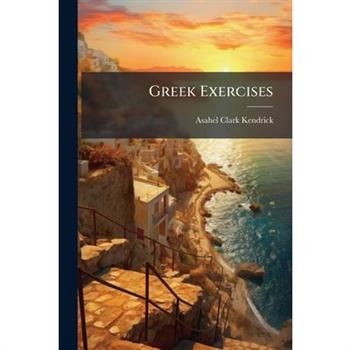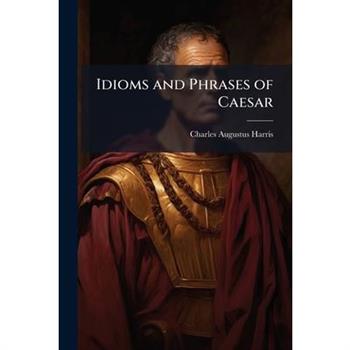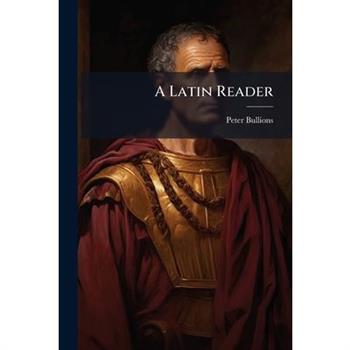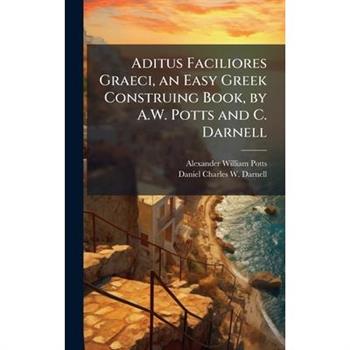Key to the Elementary Russian Grammar
"Key to the Elementary Russian Grammar" by Pietro Motti is an essential companion for students learning the Russian language. Originally published in 1911, this key provides answers and solutions to exercises found in elementary Russian grammar textbooks. It is a valuable resource for self-study and classroom use, reinforcing grammatical concepts and improving comprehension. This book is perfect for anyone seeking to master the fundamentals of Russian grammar, offering clear and concise solutions to common grammatical challenges. It is a helpful tool for students, teachers, and anyone interested in learning Russian.This work has been selected by scholars as being culturally important, and is part of the knowledge base of civilization as we know it. This work was reproduced from the original artifact, and remains as true to the original work as possible. Therefore, you will see the original copyright references, library stamps (as most of these works have been housed in our most important libraries around the world), and other notations in the work.This work is in the public domain in the United States of America, and possibly other nations. Within the United States, you may freely copy and distribute this work, as no entity (individual or corporate) has a copyright on the body of the work.As a reproduction of a historical artifact, this work may contain missing or blurred pages, poor pictures, errant marks, etc. Scholars believe, and we concur, that this work is important enough to be preserved, reproduced, and made generally available to the public. We appreciate your support of the preservation process, and thank you for being an important part of keeping this knowledge alive and relevant.
Latin Exercises
Latin Exercises is a comprehensive guide designed to aid students in mastering Latin grammar and composition. Authored by John Eyton Bickersteth Mayor, a renowned classical scholar, this book provides a structured approach to learning Latin through practical exercises and detailed explanations. Suitable for both classroom use and self-study, the exercises cover a wide range of grammatical concepts, reinforcing understanding and building proficiency in the language. This book remains a valuable resource for anyone seeking a solid foundation in Latin.This work has been selected by scholars as being culturally important, and is part of the knowledge base of civilization as we know it. This work was reproduced from the original artifact, and remains as true to the original work as possible. Therefore, you will see the original copyright references, library stamps (as most of these works have been housed in our most important libraries around the world), and other notations in the work.This work is in the public domain in the United States of America, and possibly other nations. Within the United States, you may freely copy and distribute this work, as no entity (individual or corporate) has a copyright on the body of the work.As a reproduction of a historical artifact, this work may contain missing or blurred pages, poor pictures, errant marks, etc. Scholars believe, and we concur, that this work is important enough to be preserved, reproduced, and made generally available to the public. We appreciate your support of the preservation process, and thank you for being an important part of keeping this knowledge alive and relevant.
Serbian Vocabulary Practice to the Reading Book "Idemo dalje 2" - Latin Script
Serbian: Vocabulary Practice to the Reading Book "Idemo dalje 2" was developed as a supplement to the reading book "Serbian: Idemo dalje 2". The book contains alphabetically ordered words, terms and expressions that can also be found in the reading book, and for each word there are one or more sentences as examples. All words and phrases are written in Latin script and all words and phrases have a translation into English.The vocabulary practice can also be used independently of the rest of the accompanying material, as independent reading or as a reference book when learning Serbian.The same version of the book is also available in Cyrillic as an option.This book is part of the SERBIAN READER book series "IDEMO DALJE", which offers useful tips for learning Serbian as a foreign language in addition to textbooks, reading books, audio books, interactive e-books, videos and other media. Further information about the book series and other publications for learning Serbian can be found on our homepage.
Lonely Planet Czech Phrasebook & Dictionary
Lonely Planet's Czech Phrasebook and Dictionary is your handy passport to culturally enriching travels with the most relevant and useful Czech phrases and vocabulary for all your travel needs. Learn how to ask for directions, decode menus, find accommodation, enjoy social interactions with confidence, and more; all with your trusted travel companion.Get More From Your Trip with Easy-to-Find Phrases for Every Travel Situation!Feel at ease with essential tips on culture, manners, idioms and multiple meaningsOrder with confidence, explain food allergies, and try new foods with the menu decoderSave time and hassles with vital phrases at your fingertipsNever get stuck for words with the 3500-word two-way, quick-reference dictionaryBe prepared for both common and emergency travel situations with practical phrases and terminologyMeet friends with conversation starter phrasesGet your message across with easy-to-use pronunciation guidesInside Lonely Planet's Czech Phrasebook and Dictionary: Full-colour throughoutUser-friendly layout organised by travel scenario categoriesSurvival phrases inside front cover for at-a-glance, on-the-fly cuesConvenient features5 Phrases to Learn Before You Go10 Ways to Start a Sentence10 Phrases to Sound like a LocalListen For - phrases you may hearLook For - phrases you may see on signsShortcuts - easy-to-remember alternatives to the full phrasesQandA - suggested answers to questions askedCoversBasics - time, dates, numbers, amounts, pronunciation, reading tips, grammar rulesPractical - travel with kids, disabled travellers, sightseeing, business, banking, post office, internet, phones, repairs, bargaining, accommodation, directions, border crossing, transportSocial - meeting people, interests, feelings, opinions, going out, romance, culture, activities, weatherSafe Travel - emergencies, police, doctor, chemist, dentist, symptoms, conditionsFood - ordering, at the market, at the bar, dishes, ingredientsThe Perfect Choice: Lonely Planet's Czech Phrasebook and Dictionary, a pocket-sized comprehensive language guide, provides on-the-go language assistance; great for language students and travellers looking to interact with locals and immerse themselves in local culture.About Lonely Planet: Lonely Planet, a Red Ventures Company, is the world's number one travel guidebook brand. Providing both inspiring and trustworthy information for every kind of traveller since 1973, Lonely Planet reaches hundreds of millions of travellers each year online and in print and helps them unlock amazing experiences. Visit us at lonelyplanet.com and join our community of followers on Facebook (facebook.com/lonelyplanet), Twitter (@lonelyplanet), Instagram (instagram.com/lonelyplanet), and TikTok (@lonelyplanet).'Lonely Planet. It's on everyone's bookshelves; it's in every traveller's hands. It's on mobile phones. It's on the Internet. It's everywhere, and it's telling entire generations of people how to travel the world.' Fairfax Media (Australia)
A New Latin Grammar
"A New Latin Grammar," authored by Joab Goldsmith Cooper and originally published in 1829, offers a comprehensive approach to learning Latin. Designed for students and educators alike, this grammar provides a structured foundation in the Latin language, covering essential elements of syntax and morphology. This book provides explanations and exercises to facilitate effective language acquisition. A valuable resource for those interested in classical languages and 19th-century educational practices, this book remains relevant for both academic study and personal enrichment.This work has been selected by scholars as being culturally important, and is part of the knowledge base of civilization as we know it. This work was reproduced from the original artifact, and remains as true to the original work as possible. Therefore, you will see the original copyright references, library stamps (as most of these works have been housed in our most important libraries around the world), and other notations in the work.This work is in the public domain in the United States of America, and possibly other nations. Within the United States, you may freely copy and distribute this work, as no entity (individual or corporate) has a copyright on the body of the work.As a reproduction of a historical artifact, this work may contain missing or blurred pages, poor pictures, errant marks, etc. Scholars believe, and we concur, that this work is important enough to be preserved, reproduced, and made generally available to the public. We appreciate your support of the preservation process, and thank you for being an important part of keeping this knowledge alive and relevant.
The First Greek Book
"The First Greek Book" is a comprehensive introduction to the Greek language, designed for students beginning their study of this classical tongue. Authored by Clarence Willard Gleason and Caroline Stone Atherton, this textbook offers a systematic approach to Greek grammar, vocabulary, and sentence construction.Originally published in 1895, this edition retains the structure and content that have made it a valuable resource for generations of students. Readers will find detailed explanations of grammatical concepts, along with numerous exercises and examples to reinforce their understanding. This book is ideal for both classroom use and self-study, providing a solid foundation for further exploration of Greek literature and culture.This work has been selected by scholars as being culturally important, and is part of the knowledge base of civilization as we know it. This work was reproduced from the original artifact, and remains as true to the original work as possible. Therefore, you will see the original copyright references, library stamps (as most of these works have been housed in our most important libraries around the world), and other notations in the work.This work is in the public domain in the United States of America, and possibly other nations. Within the United States, you may freely copy and distribute this work, as no entity (individual or corporate) has a copyright on the body of the work.As a reproduction of a historical artifact, this work may contain missing or blurred pages, poor pictures, errant marks, etc. Scholars believe, and we concur, that this work is important enough to be preserved, reproduced, and made generally available to the public. We appreciate your support of the preservation process, and thank you for being an important part of keeping this knowledge alive and relevant.
A Compendious Hebrew Grammar
"A Compendious Hebrew Grammar" by Marcus Heinrich Bresslau, originally published in 1855, offers a detailed guide to the intricacies of the Hebrew language. Designed for students and scholars alike, this grammar provides a structured approach to understanding Hebrew, covering morphology, syntax, and vocabulary. Bresslau's work reflects the linguistic scholarship of the 19th century and remains valuable for those studying biblical texts and Jewish history. This edition preserves the original text, offering insights into the historical methods of language instruction and the nuances of classical Hebrew. A useful resource for both academic study and personal enrichment.This work has been selected by scholars as being culturally important, and is part of the knowledge base of civilization as we know it. This work was reproduced from the original artifact, and remains as true to the original work as possible. Therefore, you will see the original copyright references, library stamps (as most of these works have been housed in our most important libraries around the world), and other notations in the work.This work is in the public domain in the United States of America, and possibly other nations. Within the United States, you may freely copy and distribute this work, as no entity (individual or corporate) has a copyright on the body of the work.As a reproduction of a historical artifact, this work may contain missing or blurred pages, poor pictures, errant marks, etc. Scholars believe, and we concur, that this work is important enough to be preserved, reproduced, and made generally available to the public. We appreciate your support of the preservation process, and thank you for being an important part of keeping this knowledge alive and relevant.
A Compendious Hebrew Grammar
"A Compendious Hebrew Grammar" by Marcus Heinrich Bresslau, originally published in 1855, offers a detailed guide to the intricacies of the Hebrew language. Designed for students and scholars alike, this grammar provides a structured approach to understanding Hebrew, covering morphology, syntax, and vocabulary. Bresslau's work reflects the linguistic scholarship of the 19th century and remains valuable for those studying biblical texts and Jewish history. This edition preserves the original text, offering insights into the historical methods of language instruction and the nuances of classical Hebrew. A useful resource for both academic study and personal enrichment.This work has been selected by scholars as being culturally important, and is part of the knowledge base of civilization as we know it. This work was reproduced from the original artifact, and remains as true to the original work as possible. Therefore, you will see the original copyright references, library stamps (as most of these works have been housed in our most important libraries around the world), and other notations in the work.This work is in the public domain in the United States of America, and possibly other nations. Within the United States, you may freely copy and distribute this work, as no entity (individual or corporate) has a copyright on the body of the work.As a reproduction of a historical artifact, this work may contain missing or blurred pages, poor pictures, errant marks, etc. Scholars believe, and we concur, that this work is important enough to be preserved, reproduced, and made generally available to the public. We appreciate your support of the preservation process, and thank you for being an important part of keeping this knowledge alive and relevant.
Assessment of Russian as a Foreign Language
Assessment of Russian as a Foreign Language: Unlocking Proficiency explores recent research, methodologies, and practices in Russian language assessment, offering a comprehensive guide for teachers, researchers, and administrators.
The First Greek Book
"The First Greek Book" is a comprehensive introduction to the Greek language, designed for students beginning their study of this classical tongue. Authored by Clarence Willard Gleason and Caroline Stone Atherton, this textbook offers a systematic approach to Greek grammar, vocabulary, and sentence construction.Originally published in 1895, this edition retains the structure and content that have made it a valuable resource for generations of students. Readers will find detailed explanations of grammatical concepts, along with numerous exercises and examples to reinforce their understanding. This book is ideal for both classroom use and self-study, providing a solid foundation for further exploration of Greek literature and culture.This work has been selected by scholars as being culturally important, and is part of the knowledge base of civilization as we know it. This work was reproduced from the original artifact, and remains as true to the original work as possible. Therefore, you will see the original copyright references, library stamps (as most of these works have been housed in our most important libraries around the world), and other notations in the work.This work is in the public domain in the United States of America, and possibly other nations. Within the United States, you may freely copy and distribute this work, as no entity (individual or corporate) has a copyright on the body of the work.As a reproduction of a historical artifact, this work may contain missing or blurred pages, poor pictures, errant marks, etc. Scholars believe, and we concur, that this work is important enough to be preserved, reproduced, and made generally available to the public. We appreciate your support of the preservation process, and thank you for being an important part of keeping this knowledge alive and relevant.
The Elements of the Hebrew Language
The Elements of the Hebrew Language, by A.D. Jones, originally published in 1870, offers a comprehensive guide to understanding the intricacies of the Hebrew language. This book is an invaluable resource for students and scholars seeking to delve into the structure and nuances of Hebrew, providing a solid foundation in its grammar and vocabulary.Jones's work is meticulously detailed, making it an essential addition to the library of anyone studying ancient texts or interested in the linguistic roots of religious scriptures. This edition retains the original content, ensuring that readers have access to the same wealth of knowledge that has aided generations of learners. Discover the enduring relevance of Hebrew with this classic text.This work has been selected by scholars as being culturally important, and is part of the knowledge base of civilization as we know it. This work was reproduced from the original artifact, and remains as true to the original work as possible. Therefore, you will see the original copyright references, library stamps (as most of these works have been housed in our most important libraries around the world), and other notations in the work.This work is in the public domain in the United States of America, and possibly other nations. Within the United States, you may freely copy and distribute this work, as no entity (individual or corporate) has a copyright on the body of the work.As a reproduction of a historical artifact, this work may contain missing or blurred pages, poor pictures, errant marks, etc. Scholars believe, and we concur, that this work is important enough to be preserved, reproduced, and made generally available to the public. We appreciate your support of the preservation process, and thank you for being an important part of keeping this knowledge alive and relevant.
The Elements of the Hebrew Language
The Elements of the Hebrew Language, by A.D. Jones, originally published in 1870, offers a comprehensive guide to understanding the intricacies of the Hebrew language. This book is an invaluable resource for students and scholars seeking to delve into the structure and nuances of Hebrew, providing a solid foundation in its grammar and vocabulary.Jones's work is meticulously detailed, making it an essential addition to the library of anyone studying ancient texts or interested in the linguistic roots of religious scriptures. This edition retains the original content, ensuring that readers have access to the same wealth of knowledge that has aided generations of learners. Discover the enduring relevance of Hebrew with this classic text.This work has been selected by scholars as being culturally important, and is part of the knowledge base of civilization as we know it. This work was reproduced from the original artifact, and remains as true to the original work as possible. Therefore, you will see the original copyright references, library stamps (as most of these works have been housed in our most important libraries around the world), and other notations in the work.This work is in the public domain in the United States of America, and possibly other nations. Within the United States, you may freely copy and distribute this work, as no entity (individual or corporate) has a copyright on the body of the work.As a reproduction of a historical artifact, this work may contain missing or blurred pages, poor pictures, errant marks, etc. Scholars believe, and we concur, that this work is important enough to be preserved, reproduced, and made generally available to the public. We appreciate your support of the preservation process, and thank you for being an important part of keeping this knowledge alive and relevant.
A Practical Introduction to Latin Prose Composition. [With] Key
A Practical Introduction to Latin Prose Composition is a comprehensive guide designed to aid students in mastering the art of writing in Latin. Authored by Thomas Kerchever Arnold, this book offers a structured approach to Latin composition, providing clear explanations and practical exercises to enhance the learner's proficiency. The book includes a key, making it suitable for both classroom use and independent study. Through detailed lessons and carefully crafted examples, students will develop a strong foundation in Latin grammar and syntax, enabling them to construct elegant and accurate Latin prose. Ideal for students and enthusiasts seeking to improve their Latin writing skills, this book remains a valuable resource for classical language education.This work has been selected by scholars as being culturally important, and is part of the knowledge base of civilization as we know it. This work was reproduced from the original artifact, and remains as true to the original work as possible. Therefore, you will see the original copyright references, library stamps (as most of these works have been housed in our most important libraries around the world), and other notations in the work.This work is in the public domain in the United States of America, and possibly other nations. Within the United States, you may freely copy and distribute this work, as no entity (individual or corporate) has a copyright on the body of the work.As a reproduction of a historical artifact, this work may contain missing or blurred pages, poor pictures, errant marks, etc. Scholars believe, and we concur, that this work is important enough to be preserved, reproduced, and made generally available to the public. We appreciate your support of the preservation process, and thank you for being an important part of keeping this knowledge alive and relevant.
Introductory Exercises On the Greek Language. [With] Key
"Introductory Exercises On the Greek Language" by George Dunbar offers a comprehensive introduction to the fundamentals of Greek. Designed for students beginning their study of this classical language, this book provides a structured approach to learning Greek grammar and vocabulary through carefully crafted exercises. This edition includes a key to the exercises, allowing students to check their work and reinforce their understanding. Dunbar's work is an invaluable resource for anyone seeking to master the basics of Greek, providing a solid foundation for further study of Greek literature and culture. Its enduring value lies in its clear and methodical presentation of the core elements of the Greek language, making it an essential tool for both self-study and classroom use.This work has been selected by scholars as being culturally important, and is part of the knowledge base of civilization as we know it. This work was reproduced from the original artifact, and remains as true to the original work as possible. Therefore, you will see the original copyright references, library stamps (as most of these works have been housed in our most important libraries around the world), and other notations in the work.This work is in the public domain in the United States of America, and possibly other nations. Within the United States, you may freely copy and distribute this work, as no entity (individual or corporate) has a copyright on the body of the work.As a reproduction of a historical artifact, this work may contain missing or blurred pages, poor pictures, errant marks, etc. Scholars believe, and we concur, that this work is important enough to be preserved, reproduced, and made generally available to the public. We appreciate your support of the preservation process, and thank you for being an important part of keeping this knowledge alive and relevant.
Latin Grammar
"Latin Grammar" by Albert Harkness is a comprehensive textbook designed to provide students with a thorough understanding of Latin grammar. This edition, potentially dating back to 1881, offers a detailed exposition of Latin syntax, morphology, and vocabulary. It is structured to facilitate systematic learning, guiding students through the intricacies of the Latin language with clear explanations and illustrative examples. A valuable resource for both beginners and advanced learners, this grammar book covers essential topics such as declensions, conjugations, sentence structure, and composition. Its enduring relevance makes it a useful tool for anyone studying Latin literature, history, or culture, and those seeking a solid foundation in classical languages.This work has been selected by scholars as being culturally important, and is part of the knowledge base of civilization as we know it. This work was reproduced from the original artifact, and remains as true to the original work as possible. Therefore, you will see the original copyright references, library stamps (as most of these works have been housed in our most important libraries around the world), and other notations in the work.This work is in the public domain in the United States of America, and possibly other nations. Within the United States, you may freely copy and distribute this work, as no entity (individual or corporate) has a copyright on the body of the work.As a reproduction of a historical artifact, this work may contain missing or blurred pages, poor pictures, errant marks, etc. Scholars believe, and we concur, that this work is important enough to be preserved, reproduced, and made generally available to the public. We appreciate your support of the preservation process, and thank you for being an important part of keeping this knowledge alive and relevant.
Latin Language and Grammar
"Latin Language and Grammar" by Angus Dallas is a comprehensive guide to understanding and mastering the Latin language. Originally published in 1871, this work offers a detailed exploration of Latin grammar, syntax, and vocabulary. It is designed for students and scholars seeking a thorough grounding in classical Latin. The book covers essential grammatical concepts, providing clear explanations and illustrative examples. This edition retains the original text, making it an invaluable resource for those studying Latin literature, history, and culture. It presents a systematic approach to learning Latin, suitable for both classroom use and self-study. Dallas's work remains a cornerstone for anyone interested in the intricacies of the Latin language and its enduring influence on Western civilization.This work has been selected by scholars as being culturally important, and is part of the knowledge base of civilization as we know it. This work was reproduced from the original artifact, and remains as true to the original work as possible. Therefore, you will see the original copyright references, library stamps (as most of these works have been housed in our most important libraries around the world), and other notations in the work.This work is in the public domain in the United States of America, and possibly other nations. Within the United States, you may freely copy and distribute this work, as no entity (individual or corporate) has a copyright on the body of the work.As a reproduction of a historical artifact, this work may contain missing or blurred pages, poor pictures, errant marks, etc. Scholars believe, and we concur, that this work is important enough to be preserved, reproduced, and made generally available to the public. We appreciate your support of the preservation process, and thank you for being an important part of keeping this knowledge alive and relevant.
Latin Prose Exercises Based Upon Caesar's Gallic War
Latin Prose Exercises Based Upon Caesar's Gallic War, by Clement Bryans, is a comprehensive guide designed to aid students in mastering Latin prose composition. This book serves as an invaluable resource for those studying Caesar's iconic work, providing a structured approach to understanding and replicating his distinctive writing style. The exercises are carefully crafted to reinforce grammatical concepts and expand vocabulary, featuring a detailed classification of Caesar's chief phrases and grammatical notes on his unique usages. Students will benefit from the focused practice, enabling them to develop a deeper appreciation for the intricacies of Latin prose. Whether used in the classroom or for self-study, this book offers a rigorous and rewarding path to proficiency in Latin composition.This work has been selected by scholars as being culturally important, and is part of the knowledge base of civilization as we know it. This work was reproduced from the original artifact, and remains as true to the original work as possible. Therefore, you will see the original copyright references, library stamps (as most of these works have been housed in our most important libraries around the world), and other notations in the work.This work is in the public domain in the United States of America, and possibly other nations. Within the United States, you may freely copy and distribute this work, as no entity (individual or corporate) has a copyright on the body of the work.As a reproduction of a historical artifact, this work may contain missing or blurred pages, poor pictures, errant marks, etc. Scholars believe, and we concur, that this work is important enough to be preserved, reproduced, and made generally available to the public. We appreciate your support of the preservation process, and thank you for being an important part of keeping this knowledge alive and relevant.
Latin Prose Exercises Based Upon Caesar's Gallic War
Latin Prose Exercises Based Upon Caesar's Gallic War, by Clement Bryans, is a comprehensive guide designed to aid students in mastering Latin prose composition. This book serves as an invaluable resource for those studying Caesar's iconic work, providing a structured approach to understanding and replicating his distinctive writing style. The exercises are carefully crafted to reinforce grammatical concepts and expand vocabulary, featuring a detailed classification of Caesar's chief phrases and grammatical notes on his unique usages. Students will benefit from the focused practice, enabling them to develop a deeper appreciation for the intricacies of Latin prose. Whether used in the classroom or for self-study, this book offers a rigorous and rewarding path to proficiency in Latin composition.This work has been selected by scholars as being culturally important, and is part of the knowledge base of civilization as we know it. This work was reproduced from the original artifact, and remains as true to the original work as possible. Therefore, you will see the original copyright references, library stamps (as most of these works have been housed in our most important libraries around the world), and other notations in the work.This work is in the public domain in the United States of America, and possibly other nations. Within the United States, you may freely copy and distribute this work, as no entity (individual or corporate) has a copyright on the body of the work.As a reproduction of a historical artifact, this work may contain missing or blurred pages, poor pictures, errant marks, etc. Scholars believe, and we concur, that this work is important enough to be preserved, reproduced, and made generally available to the public. We appreciate your support of the preservation process, and thank you for being an important part of keeping this knowledge alive and relevant.
A Practical Introduction to Latin Prose Composition. [With] Key
A Practical Introduction to Latin Prose Composition is a comprehensive guide designed to aid students in mastering the art of writing in Latin. Authored by Thomas Kerchever Arnold, this book offers a structured approach to Latin composition, providing clear explanations and practical exercises to enhance the learner's proficiency. The book includes a key, making it suitable for both classroom use and independent study. Through detailed lessons and carefully crafted examples, students will develop a strong foundation in Latin grammar and syntax, enabling them to construct elegant and accurate Latin prose. Ideal for students and enthusiasts seeking to improve their Latin writing skills, this book remains a valuable resource for classical language education.This work has been selected by scholars as being culturally important, and is part of the knowledge base of civilization as we know it. This work was reproduced from the original artifact, and remains as true to the original work as possible. Therefore, you will see the original copyright references, library stamps (as most of these works have been housed in our most important libraries around the world), and other notations in the work.This work is in the public domain in the United States of America, and possibly other nations. Within the United States, you may freely copy and distribute this work, as no entity (individual or corporate) has a copyright on the body of the work.As a reproduction of a historical artifact, this work may contain missing or blurred pages, poor pictures, errant marks, etc. Scholars believe, and we concur, that this work is important enough to be preserved, reproduced, and made generally available to the public. We appreciate your support of the preservation process, and thank you for being an important part of keeping this knowledge alive and relevant.
Latin Grammar
"Latin Grammar" by Albert Harkness is a comprehensive textbook designed to provide students with a thorough understanding of Latin grammar. This edition, potentially dating back to 1881, offers a detailed exposition of Latin syntax, morphology, and vocabulary. It is structured to facilitate systematic learning, guiding students through the intricacies of the Latin language with clear explanations and illustrative examples. A valuable resource for both beginners and advanced learners, this grammar book covers essential topics such as declensions, conjugations, sentence structure, and composition. Its enduring relevance makes it a useful tool for anyone studying Latin literature, history, or culture, and those seeking a solid foundation in classical languages.This work has been selected by scholars as being culturally important, and is part of the knowledge base of civilization as we know it. This work was reproduced from the original artifact, and remains as true to the original work as possible. Therefore, you will see the original copyright references, library stamps (as most of these works have been housed in our most important libraries around the world), and other notations in the work.This work is in the public domain in the United States of America, and possibly other nations. Within the United States, you may freely copy and distribute this work, as no entity (individual or corporate) has a copyright on the body of the work.As a reproduction of a historical artifact, this work may contain missing or blurred pages, poor pictures, errant marks, etc. Scholars believe, and we concur, that this work is important enough to be preserved, reproduced, and made generally available to the public. We appreciate your support of the preservation process, and thank you for being an important part of keeping this knowledge alive and relevant.
Latin Language and Grammar
"Latin Language and Grammar" by Angus Dallas is a comprehensive guide to understanding and mastering the Latin language. Originally published in 1871, this work offers a detailed exploration of Latin grammar, syntax, and vocabulary. It is designed for students and scholars seeking a thorough grounding in classical Latin. The book covers essential grammatical concepts, providing clear explanations and illustrative examples. This edition retains the original text, making it an invaluable resource for those studying Latin literature, history, and culture. It presents a systematic approach to learning Latin, suitable for both classroom use and self-study. Dallas's work remains a cornerstone for anyone interested in the intricacies of the Latin language and its enduring influence on Western civilization.This work has been selected by scholars as being culturally important, and is part of the knowledge base of civilization as we know it. This work was reproduced from the original artifact, and remains as true to the original work as possible. Therefore, you will see the original copyright references, library stamps (as most of these works have been housed in our most important libraries around the world), and other notations in the work.This work is in the public domain in the United States of America, and possibly other nations. Within the United States, you may freely copy and distribute this work, as no entity (individual or corporate) has a copyright on the body of the work.As a reproduction of a historical artifact, this work may contain missing or blurred pages, poor pictures, errant marks, etc. Scholars believe, and we concur, that this work is important enough to be preserved, reproduced, and made generally available to the public. We appreciate your support of the preservation process, and thank you for being an important part of keeping this knowledge alive and relevant.
The Eton Latin Grammar [Ed.] by G. Taylor
"The Eton Latin Grammar," edited by G. Taylor, stands as a testament to the enduring importance of classical education. Originally developed for the students of Eton College, this grammar provides a comprehensive foundation in Latin, covering morphology, syntax, and vocabulary. It presents a structured approach to learning Latin, making it suitable for both beginners and those seeking to deepen their understanding. This edition retains the core principles of the original, offering clear explanations and examples to guide learners through the intricacies of the Latin language. Its historical significance and pedagogical value make "The Eton Latin Grammar" a valuable resource for students, teachers, and anyone with an interest in the classical world.This work has been selected by scholars as being culturally important, and is part of the knowledge base of civilization as we know it. This work was reproduced from the original artifact, and remains as true to the original work as possible. Therefore, you will see the original copyright references, library stamps (as most of these works have been housed in our most important libraries around the world), and other notations in the work.This work is in the public domain in the United States of America, and possibly other nations. Within the United States, you may freely copy and distribute this work, as no entity (individual or corporate) has a copyright on the body of the work.As a reproduction of a historical artifact, this work may contain missing or blurred pages, poor pictures, errant marks, etc. Scholars believe, and we concur, that this work is important enough to be preserved, reproduced, and made generally available to the public. We appreciate your support of the preservation process, and thank you for being an important part of keeping this knowledge alive and relevant.
Analytical Latin Grammar
"Analytical Latin Grammar" offers a comprehensive exploration of Latin grammar, designed for both students and educators. This text provides a structured approach to understanding the intricacies of Latin, covering morphology, syntax, and vocabulary. Charles Gillingham Hamilton's clear explanations and systematic organization make this grammar an invaluable resource for mastering the Latin language. With its detailed examples and exercises, this book supports a deep understanding of Latin, enhancing reading comprehension and composition skills. Ideal for classroom use or self-study, "Analytical Latin Grammar" remains a vital tool for anyone seeking a rigorous foundation in Latin.This work has been selected by scholars as being culturally important, and is part of the knowledge base of civilization as we know it. This work was reproduced from the original artifact, and remains as true to the original work as possible. Therefore, you will see the original copyright references, library stamps (as most of these works have been housed in our most important libraries around the world), and other notations in the work.This work is in the public domain in the United States of America, and possibly other nations. Within the United States, you may freely copy and distribute this work, as no entity (individual or corporate) has a copyright on the body of the work.As a reproduction of a historical artifact, this work may contain missing or blurred pages, poor pictures, errant marks, etc. Scholars believe, and we concur, that this work is important enough to be preserved, reproduced, and made generally available to the public. We appreciate your support of the preservation process, and thank you for being an important part of keeping this knowledge alive and relevant.
The Eton Latin Grammar [Ed.] by G. Taylor
"The Eton Latin Grammar," edited by G. Taylor, stands as a testament to the enduring importance of classical education. Originally developed for the students of Eton College, this grammar provides a comprehensive foundation in Latin, covering morphology, syntax, and vocabulary. It presents a structured approach to learning Latin, making it suitable for both beginners and those seeking to deepen their understanding. This edition retains the core principles of the original, offering clear explanations and examples to guide learners through the intricacies of the Latin language. Its historical significance and pedagogical value make "The Eton Latin Grammar" a valuable resource for students, teachers, and anyone with an interest in the classical world.This work has been selected by scholars as being culturally important, and is part of the knowledge base of civilization as we know it. This work was reproduced from the original artifact, and remains as true to the original work as possible. Therefore, you will see the original copyright references, library stamps (as most of these works have been housed in our most important libraries around the world), and other notations in the work.This work is in the public domain in the United States of America, and possibly other nations. Within the United States, you may freely copy and distribute this work, as no entity (individual or corporate) has a copyright on the body of the work.As a reproduction of a historical artifact, this work may contain missing or blurred pages, poor pictures, errant marks, etc. Scholars believe, and we concur, that this work is important enough to be preserved, reproduced, and made generally available to the public. We appreciate your support of the preservation process, and thank you for being an important part of keeping this knowledge alive and relevant.
Analytical Latin Grammar
"Analytical Latin Grammar" offers a comprehensive exploration of Latin grammar, designed for both students and educators. This text provides a structured approach to understanding the intricacies of Latin, covering morphology, syntax, and vocabulary. Charles Gillingham Hamilton's clear explanations and systematic organization make this grammar an invaluable resource for mastering the Latin language. With its detailed examples and exercises, this book supports a deep understanding of Latin, enhancing reading comprehension and composition skills. Ideal for classroom use or self-study, "Analytical Latin Grammar" remains a vital tool for anyone seeking a rigorous foundation in Latin.This work has been selected by scholars as being culturally important, and is part of the knowledge base of civilization as we know it. This work was reproduced from the original artifact, and remains as true to the original work as possible. Therefore, you will see the original copyright references, library stamps (as most of these works have been housed in our most important libraries around the world), and other notations in the work.This work is in the public domain in the United States of America, and possibly other nations. Within the United States, you may freely copy and distribute this work, as no entity (individual or corporate) has a copyright on the body of the work.As a reproduction of a historical artifact, this work may contain missing or blurred pages, poor pictures, errant marks, etc. Scholars believe, and we concur, that this work is important enough to be preserved, reproduced, and made generally available to the public. We appreciate your support of the preservation process, and thank you for being an important part of keeping this knowledge alive and relevant.
Introductory Exercises On the Greek Language. [With] Key
"Introductory Exercises On the Greek Language" by George Dunbar offers a comprehensive introduction to the fundamentals of Greek. Designed for students beginning their study of this classical language, this book provides a structured approach to learning Greek grammar and vocabulary through carefully crafted exercises. This edition includes a key to the exercises, allowing students to check their work and reinforce their understanding. Dunbar's work is an invaluable resource for anyone seeking to master the basics of Greek, providing a solid foundation for further study of Greek literature and culture. Its enduring value lies in its clear and methodical presentation of the core elements of the Greek language, making it an essential tool for both self-study and classroom use.This work has been selected by scholars as being culturally important, and is part of the knowledge base of civilization as we know it. This work was reproduced from the original artifact, and remains as true to the original work as possible. Therefore, you will see the original copyright references, library stamps (as most of these works have been housed in our most important libraries around the world), and other notations in the work.This work is in the public domain in the United States of America, and possibly other nations. Within the United States, you may freely copy and distribute this work, as no entity (individual or corporate) has a copyright on the body of the work.As a reproduction of a historical artifact, this work may contain missing or blurred pages, poor pictures, errant marks, etc. Scholars believe, and we concur, that this work is important enough to be preserved, reproduced, and made generally available to the public. We appreciate your support of the preservation process, and thank you for being an important part of keeping this knowledge alive and relevant.
The Dublin Latin Grammar
"The Dublin Latin Grammar" is a comprehensive guide to the Latin language, designed to provide students and enthusiasts with a solid foundation in Latin grammar. This book offers a systematic approach to understanding the intricacies of Latin, making it an invaluable resource for both beginners and those looking to deepen their knowledge.Whether you are a student embarking on your Latin studies or a seasoned scholar seeking a reliable reference, "The Dublin Latin Grammar" promises to be an enduring companion in your linguistic journey. Its clear explanations and practical examples make it an essential addition to any Latin language enthusiast's library.This work has been selected by scholars as being culturally important, and is part of the knowledge base of civilization as we know it. This work was reproduced from the original artifact, and remains as true to the original work as possible. Therefore, you will see the original copyright references, library stamps (as most of these works have been housed in our most important libraries around the world), and other notations in the work.This work is in the public domain in the United States of America, and possibly other nations. Within the United States, you may freely copy and distribute this work, as no entity (individual or corporate) has a copyright on the body of the work.As a reproduction of a historical artifact, this work may contain missing or blurred pages, poor pictures, errant marks, etc. Scholars believe, and we concur, that this work is important enough to be preserved, reproduced, and made generally available to the public. We appreciate your support of the preservation process, and thank you for being an important part of keeping this knowledge alive and relevant.
First Greek Book
"First Greek Book" by John Robson is designed as an introductory text for students beginning their study of the Greek language. This book offers a structured approach to learning Greek, combining grammatical explanations with practical exercises and reading lessons. The content is carefully curated to build a strong foundation in Greek grammar and vocabulary, enabling students to develop their reading comprehension skills. The inclusion of exercises throughout the book allows students to practice and reinforce their understanding of the material as they progress. "First Greek Book" is a valuable resource for both classroom use and self-study, providing a clear and accessible pathway to mastering the fundamentals of Greek.This work has been selected by scholars as being culturally important, and is part of the knowledge base of civilization as we know it. This work was reproduced from the original artifact, and remains as true to the original work as possible. Therefore, you will see the original copyright references, library stamps (as most of these works have been housed in our most important libraries around the world), and other notations in the work.This work is in the public domain in the United States of America, and possibly other nations. Within the United States, you may freely copy and distribute this work, as no entity (individual or corporate) has a copyright on the body of the work.As a reproduction of a historical artifact, this work may contain missing or blurred pages, poor pictures, errant marks, etc. Scholars believe, and we concur, that this work is important enough to be preserved, reproduced, and made generally available to the public. We appreciate your support of the preservation process, and thank you for being an important part of keeping this knowledge alive and relevant.
First Greek Book
"First Greek Book" by John Robson is designed as an introductory text for students beginning their study of the Greek language. This book offers a structured approach to learning Greek, combining grammatical explanations with practical exercises and reading lessons. The content is carefully curated to build a strong foundation in Greek grammar and vocabulary, enabling students to develop their reading comprehension skills. The inclusion of exercises throughout the book allows students to practice and reinforce their understanding of the material as they progress. "First Greek Book" is a valuable resource for both classroom use and self-study, providing a clear and accessible pathway to mastering the fundamentals of Greek.This work has been selected by scholars as being culturally important, and is part of the knowledge base of civilization as we know it. This work was reproduced from the original artifact, and remains as true to the original work as possible. Therefore, you will see the original copyright references, library stamps (as most of these works have been housed in our most important libraries around the world), and other notations in the work.This work is in the public domain in the United States of America, and possibly other nations. Within the United States, you may freely copy and distribute this work, as no entity (individual or corporate) has a copyright on the body of the work.As a reproduction of a historical artifact, this work may contain missing or blurred pages, poor pictures, errant marks, etc. Scholars believe, and we concur, that this work is important enough to be preserved, reproduced, and made generally available to the public. We appreciate your support of the preservation process, and thank you for being an important part of keeping this knowledge alive and relevant.
The Dublin Latin Grammar
"The Dublin Latin Grammar" is a comprehensive guide to the Latin language, designed to provide students and enthusiasts with a solid foundation in Latin grammar. This book offers a systematic approach to understanding the intricacies of Latin, making it an invaluable resource for both beginners and those looking to deepen their knowledge.Whether you are a student embarking on your Latin studies or a seasoned scholar seeking a reliable reference, "The Dublin Latin Grammar" promises to be an enduring companion in your linguistic journey. Its clear explanations and practical examples make it an essential addition to any Latin language enthusiast's library.This work has been selected by scholars as being culturally important, and is part of the knowledge base of civilization as we know it. This work was reproduced from the original artifact, and remains as true to the original work as possible. Therefore, you will see the original copyright references, library stamps (as most of these works have been housed in our most important libraries around the world), and other notations in the work.This work is in the public domain in the United States of America, and possibly other nations. Within the United States, you may freely copy and distribute this work, as no entity (individual or corporate) has a copyright on the body of the work.As a reproduction of a historical artifact, this work may contain missing or blurred pages, poor pictures, errant marks, etc. Scholars believe, and we concur, that this work is important enough to be preserved, reproduced, and made generally available to the public. We appreciate your support of the preservation process, and thank you for being an important part of keeping this knowledge alive and relevant.
First Year’s Latin Grammar and Exercises
"First Year's Latin Grammar and Exercises" is a comprehensive introduction to the Latin language, designed for students beginning their study of Latin. Authored by James Donaldson, this book provides a structured approach to learning Latin grammar through clear explanations and practical exercises. It covers essential grammatical concepts, vocabulary, and sentence structures, enabling students to build a solid foundation in the language.This book is an invaluable resource for students looking to master the fundamentals of Latin. With its systematic approach and detailed exercises, "First Year's Latin Grammar and Exercises" remains a timeless guide for anyone embarking on the journey of learning Latin.This work has been selected by scholars as being culturally important, and is part of the knowledge base of civilization as we know it. This work was reproduced from the original artifact, and remains as true to the original work as possible. Therefore, you will see the original copyright references, library stamps (as most of these works have been housed in our most important libraries around the world), and other notations in the work.This work is in the public domain in the United States of America, and possibly other nations. Within the United States, you may freely copy and distribute this work, as no entity (individual or corporate) has a copyright on the body of the work.As a reproduction of a historical artifact, this work may contain missing or blurred pages, poor pictures, errant marks, etc. Scholars believe, and we concur, that this work is important enough to be preserved, reproduced, and made generally available to the public. We appreciate your support of the preservation process, and thank you for being an important part of keeping this knowledge alive and relevant.
First Year’s Latin Grammar and Exercises
"First Year's Latin Grammar and Exercises" is a comprehensive introduction to the Latin language, designed for students beginning their study of Latin. Authored by James Donaldson, this book provides a structured approach to learning Latin grammar through clear explanations and practical exercises. It covers essential grammatical concepts, vocabulary, and sentence structures, enabling students to build a solid foundation in the language.This book is an invaluable resource for students looking to master the fundamentals of Latin. With its systematic approach and detailed exercises, "First Year's Latin Grammar and Exercises" remains a timeless guide for anyone embarking on the journey of learning Latin.This work has been selected by scholars as being culturally important, and is part of the knowledge base of civilization as we know it. This work was reproduced from the original artifact, and remains as true to the original work as possible. Therefore, you will see the original copyright references, library stamps (as most of these works have been housed in our most important libraries around the world), and other notations in the work.This work is in the public domain in the United States of America, and possibly other nations. Within the United States, you may freely copy and distribute this work, as no entity (individual or corporate) has a copyright on the body of the work.As a reproduction of a historical artifact, this work may contain missing or blurred pages, poor pictures, errant marks, etc. Scholars believe, and we concur, that this work is important enough to be preserved, reproduced, and made generally available to the public. We appreciate your support of the preservation process, and thank you for being an important part of keeping this knowledge alive and relevant.
Grammatical Exercises in Latin Prose Composition
"Grammatical Exercises in Latin Prose Composition" serves as an invaluable companion to Dr. L. Schmitz's renowned "Latin Grammar." Designed to provide students with practical application of grammatical principles, this book offers a comprehensive set of exercises focused on enhancing proficiency in Latin prose composition. The exercises cover a wide range of grammatical concepts, reinforcing understanding and building confidence in writing accurate and stylistically appropriate Latin. Intended for both classroom use and independent study, this volume is structured to complement Schmitz's grammar, making it an ideal resource for students seeking to deepen their knowledge of Latin syntax and style. Whether used as a supplement to formal instruction or as a self-guided study aid, "Grammatical Exercises in Latin Prose Composition" remains a vital tool for mastering the intricacies of Latin prose.This work has been selected by scholars as being culturally important, and is part of the knowledge base of civilization as we know it. This work was reproduced from the original artifact, and remains as true to the original work as possible. Therefore, you will see the original copyright references, library stamps (as most of these works have been housed in our most important libraries around the world), and other notations in the work.This work is in the public domain in the United States of America, and possibly other nations. Within the United States, you may freely copy and distribute this work, as no entity (individual or corporate) has a copyright on the body of the work.As a reproduction of a historical artifact, this work may contain missing or blurred pages, poor pictures, errant marks, etc. Scholars believe, and we concur, that this work is important enough to be preserved, reproduced, and made generally available to the public. We appreciate your support of the preservation process, and thank you for being an important part of keeping this knowledge alive and relevant.
Materials For The Improvement Of The New Edition Of Stephens' Greek Thesaurus
"Materials For The Improvement Of The New Edition Of Stephens' Greek Thesaurus" by Henri Estienne (Henricus Stephanus) represents a significant contribution to classical lexicography. This work provides enhancements and refinements to the renowned Greek thesaurus originally compiled by Robert Estienne (Stephanus). As a valuable resource for scholars and students of the Greek language, this book offers insights into the nuances of ancient Greek vocabulary and usage. Estienne's meticulous scholarship is evident throughout, making this text essential for anyone seeking a deeper understanding of the Greek language. It remains a vital reference for researchers, linguists, and those with an interest in the historical development of lexicographical tools.This work has been selected by scholars as being culturally important, and is part of the knowledge base of civilization as we know it. This work was reproduced from the original artifact, and remains as true to the original work as possible. Therefore, you will see the original copyright references, library stamps (as most of these works have been housed in our most important libraries around the world), and other notations in the work.This work is in the public domain in the United States of America, and possibly other nations. Within the United States, you may freely copy and distribute this work, as no entity (individual or corporate) has a copyright on the body of the work.As a reproduction of a historical artifact, this work may contain missing or blurred pages, poor pictures, errant marks, etc. Scholars believe, and we concur, that this work is important enough to be preserved, reproduced, and made generally available to the public. We appreciate your support of the preservation process, and thank you for being an important part of keeping this knowledge alive and relevant.
Liber Latinus In Usum Puerorum ... Editus
"Liber Latinus In Usum Puerorum ... Editus" is a historical Latin textbook intended for young learners. Authored by Anton Friedrich B?1/4sching, this book offers a structured approach to learning Latin, likely focusing on grammar, vocabulary, and classical literature excerpts suitable for students. This edition provides valuable insights into 18th and 19th-century language pedagogy. It serves as a fascinating resource for those interested in historical methods of teaching Latin and classical studies, as well as for modern students seeking primary source material.This work has been selected by scholars as being culturally important, and is part of the knowledge base of civilization as we know it. This work was reproduced from the original artifact, and remains as true to the original work as possible. Therefore, you will see the original copyright references, library stamps (as most of these works have been housed in our most important libraries around the world), and other notations in the work.This work is in the public domain in the United States of America, and possibly other nations. Within the United States, you may freely copy and distribute this work, as no entity (individual or corporate) has a copyright on the body of the work.As a reproduction of a historical artifact, this work may contain missing or blurred pages, poor pictures, errant marks, etc. Scholars believe, and we concur, that this work is important enough to be preserved, reproduced, and made generally available to the public. We appreciate your support of the preservation process, and thank you for being an important part of keeping this knowledge alive and relevant.
Notes On Stahl's Syntax Of The Greek Verb
"Notes On Stahl's Syntax Of The Greek Verb" by Basil Lanneau Gildersleeve is a detailed examination of the intricacies of Greek verb syntax, based on the work of German philologist J.M. Stahl. This book serves as an essential reference for students and scholars of Classical Greek, offering comprehensive insights into the rules and nuances governing verb usage in ancient Greek texts. Gildersleeve's notes provide clarity and depth, making complex grammatical concepts accessible to those seeking a deeper understanding of the Greek language. This work remains valuable for anyone studying ancient literature, philosophy, or history in its original language. Perfect for advanced learners and academics alike, this edition ensures that Gildersleeve's meticulous scholarship continues to inform and enlighten future generations.This work has been selected by scholars as being culturally important, and is part of the knowledge base of civilization as we know it. This work was reproduced from the original artifact, and remains as true to the original work as possible. Therefore, you will see the original copyright references, library stamps (as most of these works have been housed in our most important libraries around the world), and other notations in the work.This work is in the public domain in the United States of America, and possibly other nations. Within the United States, you may freely copy and distribute this work, as no entity (individual or corporate) has a copyright on the body of the work.As a reproduction of a historical artifact, this work may contain missing or blurred pages, poor pictures, errant marks, etc. Scholars believe, and we concur, that this work is important enough to be preserved, reproduced, and made generally available to the public. We appreciate your support of the preservation process, and thank you for being an important part of keeping this knowledge alive and relevant.
Materials For The Improvement Of The New Edition Of Stephens' Greek Thesaurus
"Materials For The Improvement Of The New Edition Of Stephens' Greek Thesaurus" by Henri Estienne (Henricus Stephanus) represents a significant contribution to classical lexicography. This work provides enhancements and refinements to the renowned Greek thesaurus originally compiled by Robert Estienne (Stephanus). As a valuable resource for scholars and students of the Greek language, this book offers insights into the nuances of ancient Greek vocabulary and usage. Estienne's meticulous scholarship is evident throughout, making this text essential for anyone seeking a deeper understanding of the Greek language. It remains a vital reference for researchers, linguists, and those with an interest in the historical development of lexicographical tools.This work has been selected by scholars as being culturally important, and is part of the knowledge base of civilization as we know it. This work was reproduced from the original artifact, and remains as true to the original work as possible. Therefore, you will see the original copyright references, library stamps (as most of these works have been housed in our most important libraries around the world), and other notations in the work.This work is in the public domain in the United States of America, and possibly other nations. Within the United States, you may freely copy and distribute this work, as no entity (individual or corporate) has a copyright on the body of the work.As a reproduction of a historical artifact, this work may contain missing or blurred pages, poor pictures, errant marks, etc. Scholars believe, and we concur, that this work is important enough to be preserved, reproduced, and made generally available to the public. We appreciate your support of the preservation process, and thank you for being an important part of keeping this knowledge alive and relevant.
Notes On Stahl’s Syntax Of The Greek Verb
"Notes On Stahl's Syntax Of The Greek Verb" by Basil Lanneau Gildersleeve is a detailed examination of the intricacies of Greek verb syntax, based on the work of German philologist J.M. Stahl. This book serves as an essential reference for students and scholars of Classical Greek, offering comprehensive insights into the rules and nuances governing verb usage in ancient Greek texts. Gildersleeve's notes provide clarity and depth, making complex grammatical concepts accessible to those seeking a deeper understanding of the Greek language. This work remains valuable for anyone studying ancient literature, philosophy, or history in its original language. Perfect for advanced learners and academics alike, this edition ensures that Gildersleeve's meticulous scholarship continues to inform and enlighten future generations.This work has been selected by scholars as being culturally important, and is part of the knowledge base of civilization as we know it. This work was reproduced from the original artifact, and remains as true to the original work as possible. Therefore, you will see the original copyright references, library stamps (as most of these works have been housed in our most important libraries around the world), and other notations in the work.This work is in the public domain in the United States of America, and possibly other nations. Within the United States, you may freely copy and distribute this work, as no entity (individual or corporate) has a copyright on the body of the work.As a reproduction of a historical artifact, this work may contain missing or blurred pages, poor pictures, errant marks, etc. Scholars believe, and we concur, that this work is important enough to be preserved, reproduced, and made generally available to the public. We appreciate your support of the preservation process, and thank you for being an important part of keeping this knowledge alive and relevant.
Neuhebr瓣isches Und Chald瓣isches W繹rterbuch ?œber Die Talmudim Und Midraschim, Nebst Beitr. Von H.l. Fleischer. 4 Bde. [issued In 22 Pt.]
This is Jacob Levy's monumental "Neuhebr瓣isches Und Chald瓣isches W繹rterbuch ?1/4ber Die Talmudim Und Midraschim," a comprehensive dictionary of Neo-Hebrew and Chaldee found in the Talmud and Midrashic literature. Originally issued in 22 parts across 4 volumes, this dictionary remains an invaluable resource for scholars and students of Jewish texts. With contributions from H.L. Fleischer, it offers detailed lexical analysis and definitions, providing essential support for understanding these complex writings.This work has been selected by scholars as being culturally important, and is part of the knowledge base of civilization as we know it. This work was reproduced from the original artifact, and remains as true to the original work as possible. Therefore, you will see the original copyright references, library stamps (as most of these works have been housed in our most important libraries around the world), and other notations in the work.This work is in the public domain in the United States of America, and possibly other nations. Within the United States, you may freely copy and distribute this work, as no entity (individual or corporate) has a copyright on the body of the work.As a reproduction of a historical artifact, this work may contain missing or blurred pages, poor pictures, errant marks, etc. Scholars believe, and we concur, that this work is important enough to be preserved, reproduced, and made generally available to the public. We appreciate your support of the preservation process, and thank you for being an important part of keeping this knowledge alive and relevant.
Neuhebr瓣isches Und Chald瓣isches W繹rterbuch ?œber Die Talmudim Und Midraschim, Nebst Beitr. Von H.l. Fleischer. 4 Bde. [issued In 22 Pt.]
This is Jacob Levy's monumental "Neuhebr瓣isches Und Chald瓣isches W繹rterbuch ?1/4ber Die Talmudim Und Midraschim," a comprehensive dictionary of Neo-Hebrew and Chaldee found in the Talmud and Midrashic literature. Originally issued in 22 parts across 4 volumes, this dictionary remains an invaluable resource for scholars and students of Jewish texts. With contributions from H.L. Fleischer, it offers detailed lexical analysis and definitions, providing essential support for understanding these complex writings.This work has been selected by scholars as being culturally important, and is part of the knowledge base of civilization as we know it. This work was reproduced from the original artifact, and remains as true to the original work as possible. Therefore, you will see the original copyright references, library stamps (as most of these works have been housed in our most important libraries around the world), and other notations in the work.This work is in the public domain in the United States of America, and possibly other nations. Within the United States, you may freely copy and distribute this work, as no entity (individual or corporate) has a copyright on the body of the work.As a reproduction of a historical artifact, this work may contain missing or blurred pages, poor pictures, errant marks, etc. Scholars believe, and we concur, that this work is important enough to be preserved, reproduced, and made generally available to the public. We appreciate your support of the preservation process, and thank you for being an important part of keeping this knowledge alive and relevant.
Liber Latinus In Usum Puerorum ... Editus
"Liber Latinus In Usum Puerorum ... Editus" is a historical Latin textbook intended for young learners. Authored by Anton Friedrich B?1/4sching, this book offers a structured approach to learning Latin, likely focusing on grammar, vocabulary, and classical literature excerpts suitable for students. This edition provides valuable insights into 18th and 19th-century language pedagogy. It serves as a fascinating resource for those interested in historical methods of teaching Latin and classical studies, as well as for modern students seeking primary source material.This work has been selected by scholars as being culturally important, and is part of the knowledge base of civilization as we know it. This work was reproduced from the original artifact, and remains as true to the original work as possible. Therefore, you will see the original copyright references, library stamps (as most of these works have been housed in our most important libraries around the world), and other notations in the work.This work is in the public domain in the United States of America, and possibly other nations. Within the United States, you may freely copy and distribute this work, as no entity (individual or corporate) has a copyright on the body of the work.As a reproduction of a historical artifact, this work may contain missing or blurred pages, poor pictures, errant marks, etc. Scholars believe, and we concur, that this work is important enough to be preserved, reproduced, and made generally available to the public. We appreciate your support of the preservation process, and thank you for being an important part of keeping this knowledge alive and relevant.
Pis'ma
This is Volume 2 of "Pis'ma," a collection of letters written by Vladimir Sergeyevich Solovyov and Ernest L'vovich Radlov. The correspondence offers a unique glimpse into the intellectual and philosophical exchanges between two prominent figures in Russian thought. Solovyov, a renowned philosopher, theologian, poet, pamphleteer, and literary critic, engages in thoughtful dialogue with Radlov, exploring diverse philosophical and personal themes. This collection provides invaluable insight into the development of Solovyov's ideas and the intellectual climate of the time.This work has been selected by scholars as being culturally important, and is part of the knowledge base of civilization as we know it. This work was reproduced from the original artifact, and remains as true to the original work as possible. Therefore, you will see the original copyright references, library stamps (as most of these works have been housed in our most important libraries around the world), and other notations in the work.This work is in the public domain in the United States of America, and possibly other nations. Within the United States, you may freely copy and distribute this work, as no entity (individual or corporate) has a copyright on the body of the work.As a reproduction of a historical artifact, this work may contain missing or blurred pages, poor pictures, errant marks, etc. Scholars believe, and we concur, that this work is important enough to be preserved, reproduced, and made generally available to the public. We appreciate your support of the preservation process, and thank you for being an important part of keeping this knowledge alive and relevant.
Pis'ma
This is Volume 2 of "Pis'ma," a collection of letters written by Vladimir Sergeyevich Solovyov and Ernest L'vovich Radlov. The correspondence offers a unique glimpse into the intellectual and philosophical exchanges between two prominent figures in Russian thought. Solovyov, a renowned philosopher, theologian, poet, pamphleteer, and literary critic, engages in thoughtful dialogue with Radlov, exploring diverse philosophical and personal themes. This collection provides invaluable insight into the development of Solovyov's ideas and the intellectual climate of the time.This work has been selected by scholars as being culturally important, and is part of the knowledge base of civilization as we know it. This work was reproduced from the original artifact, and remains as true to the original work as possible. Therefore, you will see the original copyright references, library stamps (as most of these works have been housed in our most important libraries around the world), and other notations in the work.This work is in the public domain in the United States of America, and possibly other nations. Within the United States, you may freely copy and distribute this work, as no entity (individual or corporate) has a copyright on the body of the work.As a reproduction of a historical artifact, this work may contain missing or blurred pages, poor pictures, errant marks, etc. Scholars believe, and we concur, that this work is important enough to be preserved, reproduced, and made generally available to the public. We appreciate your support of the preservation process, and thank you for being an important part of keeping this knowledge alive and relevant.
Greek Exercises
"Greek Exercises, Adapted to Kendrick's Edition of Bullions's Greek Grammar" is a comprehensive guide designed to aid students in mastering the intricacies of the Greek language. Penned by Asahel Clark Kendrick, this volume provides a structured approach to learning Greek grammar through practical exercises and examples. It complements Bullions's Greek Grammar, offering students a cohesive and effective learning experience. Originally published in 1875, this book reflects the educational methodologies of the 19th century, providing insight into classical language instruction of the period. It remains a valuable resource for those interested in historical pedagogical methods and the study of ancient Greek.This work has been selected by scholars as being culturally important, and is part of the knowledge base of civilization as we know it. This work was reproduced from the original artifact, and remains as true to the original work as possible. Therefore, you will see the original copyright references, library stamps (as most of these works have been housed in our most important libraries around the world), and other notations in the work.This work is in the public domain in the United States of America, and possibly other nations. Within the United States, you may freely copy and distribute this work, as no entity (individual or corporate) has a copyright on the body of the work.As a reproduction of a historical artifact, this work may contain missing or blurred pages, poor pictures, errant marks, etc. Scholars believe, and we concur, that this work is important enough to be preserved, reproduced, and made generally available to the public. We appreciate your support of the preservation process, and thank you for being an important part of keeping this knowledge alive and relevant.
Idioms and Phrases of Caesar
"Idioms and Phrases of Caesar" is a comprehensive guide to understanding the nuances of Latin as employed by Julius Caesar in his writings. Compiled by Charles Augustus Harris, this book serves as an invaluable resource for students and scholars seeking to master classical Latin. The text meticulously catalogs idioms and phrases found in Caesar's works, providing idiomatic English equivalents that capture the original meaning and context.Arranged alphabetically and according to chapters, the book facilitates easy reference and study. It enhances comprehension of Caesar's texts and deepens the reader's appreciation for the intricacies of Latin prose. Whether used in the classroom or for independent study, this volume remains a crucial tool for anyone engaging with the works of Caesar.This work has been selected by scholars as being culturally important, and is part of the knowledge base of civilization as we know it. This work was reproduced from the original artifact, and remains as true to the original work as possible. Therefore, you will see the original copyright references, library stamps (as most of these works have been housed in our most important libraries around the world), and other notations in the work.This work is in the public domain in the United States of America, and possibly other nations. Within the United States, you may freely copy and distribute this work, as no entity (individual or corporate) has a copyright on the body of the work.As a reproduction of a historical artifact, this work may contain missing or blurred pages, poor pictures, errant marks, etc. Scholars believe, and we concur, that this work is important enough to be preserved, reproduced, and made generally available to the public. We appreciate your support of the preservation process, and thank you for being an important part of keeping this knowledge alive and relevant.
A Latin Reader
A Latin Reader, adapted to Bullions's Latin Grammar and to Bullions & Morris's Latin Grammar, is a comprehensive guide designed to facilitate the study of Latin. Originally published in 1870, this reader provides an introduction to the idioms of the Latin language, an improved vocabulary, and exercises in Latin prose composition following a new plan. Authored by Peter Bullions, this text aims to provide students with a solid foundation in Latin grammar and composition. This edition retains the original structure and content, making it a valuable resource for both students and educators interested in classical language studies. This book serves as a vital link to traditional methods of language instruction.This work has been selected by scholars as being culturally important, and is part of the knowledge base of civilization as we know it. This work was reproduced from the original artifact, and remains as true to the original work as possible. Therefore, you will see the original copyright references, library stamps (as most of these works have been housed in our most important libraries around the world), and other notations in the work.This work is in the public domain in the United States of America, and possibly other nations. Within the United States, you may freely copy and distribute this work, as no entity (individual or corporate) has a copyright on the body of the work.As a reproduction of a historical artifact, this work may contain missing or blurred pages, poor pictures, errant marks, etc. Scholars believe, and we concur, that this work is important enough to be preserved, reproduced, and made generally available to the public. We appreciate your support of the preservation process, and thank you for being an important part of keeping this knowledge alive and relevant.
Aditus Faciliores Graeci, an Easy Greek Construing Book, by A.W. Potts and C. Darnell
"Aditus Faciliores Graeci, an Easy Greek Construing Book," by A.W. Potts and C. Darnell, is designed as an accessible introduction to the intricacies of the Greek language. This book focuses on developing the essential skill of construing, providing students with a solid foundation in Greek grammar and syntax. Through carefully selected exercises and examples, learners will gain confidence in understanding and translating Greek texts. Ideal for students beginning their study of Greek, as well as those seeking to improve their understanding, this book offers a practical and effective approach to mastering the language. With clear explanations and a methodical structure, "Aditus Faciliores Graeci" remains a valuable resource for anyone interested in classical studies and language acquisition.This work has been selected by scholars as being culturally important, and is part of the knowledge base of civilization as we know it. This work was reproduced from the original artifact, and remains as true to the original work as possible. Therefore, you will see the original copyright references, library stamps (as most of these works have been housed in our most important libraries around the world), and other notations in the work.This work is in the public domain in the United States of America, and possibly other nations. Within the United States, you may freely copy and distribute this work, as no entity (individual or corporate) has a copyright on the body of the work.As a reproduction of a historical artifact, this work may contain missing or blurred pages, poor pictures, errant marks, etc. Scholars believe, and we concur, that this work is important enough to be preserved, reproduced, and made generally available to the public. We appreciate your support of the preservation process, and thank you for being an important part of keeping this knowledge alive and relevant.
Greek Exercises
"Greek Exercises, Adapted to Kendrick's Edition of Bullions's Greek Grammar" is a comprehensive guide designed to aid students in mastering the intricacies of the Greek language. Penned by Asahel Clark Kendrick, this volume provides a structured approach to learning Greek grammar through practical exercises and examples. It complements Bullions's Greek Grammar, offering students a cohesive and effective learning experience. Originally published in 1875, this book reflects the educational methodologies of the 19th century, providing insight into classical language instruction of the period. It remains a valuable resource for those interested in historical pedagogical methods and the study of ancient Greek.This work has been selected by scholars as being culturally important, and is part of the knowledge base of civilization as we know it. This work was reproduced from the original artifact, and remains as true to the original work as possible. Therefore, you will see the original copyright references, library stamps (as most of these works have been housed in our most important libraries around the world), and other notations in the work.This work is in the public domain in the United States of America, and possibly other nations. Within the United States, you may freely copy and distribute this work, as no entity (individual or corporate) has a copyright on the body of the work.As a reproduction of a historical artifact, this work may contain missing or blurred pages, poor pictures, errant marks, etc. Scholars believe, and we concur, that this work is important enough to be preserved, reproduced, and made generally available to the public. We appreciate your support of the preservation process, and thank you for being an important part of keeping this knowledge alive and relevant.




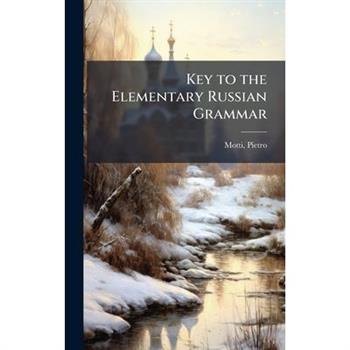
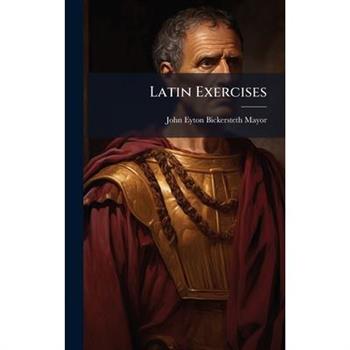


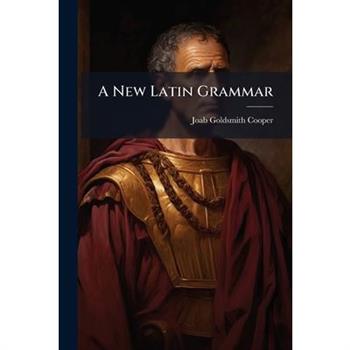
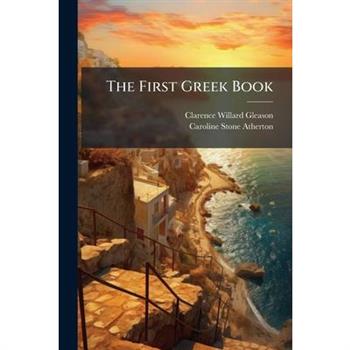
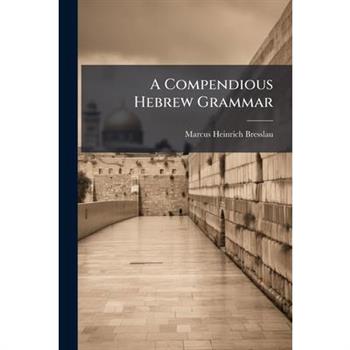

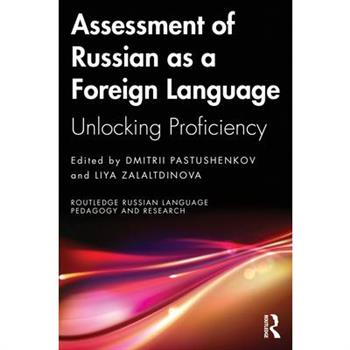
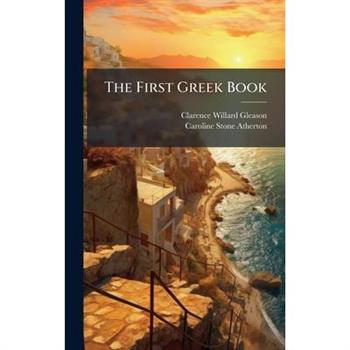
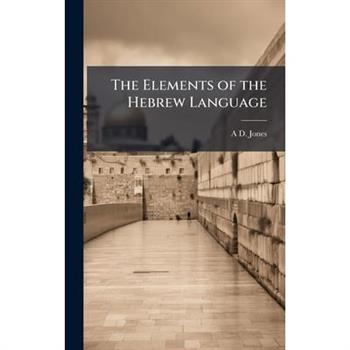

![A Practical Introduction to Latin Prose Composition. [With] Key A Practical Introduction to Latin Prose Composition. [With] Key](https://cdn.kingstone.com.tw/english/images/product/6238/9781023896238m.jpg?Q=25c55)
![Introductory Exercises On the Greek Language. [With] Key Introductory Exercises On the Greek Language. [With] Key](https://cdn.kingstone.com.tw/english/images/product/4884/9781023884884m.jpg?Q=25246)
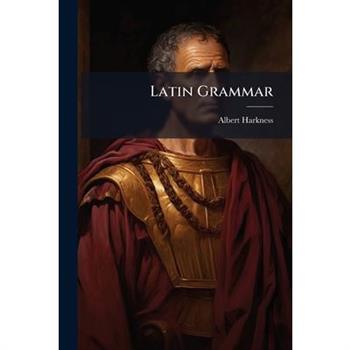

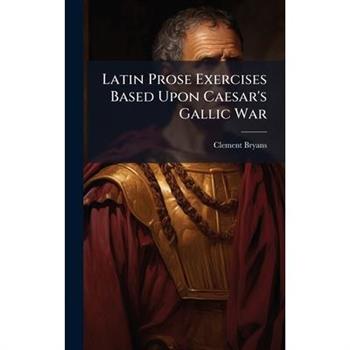
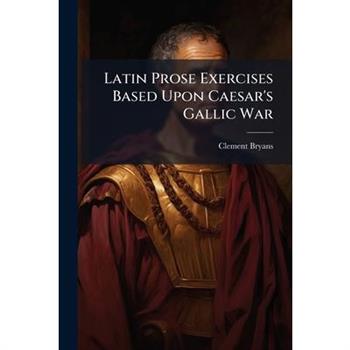
![A Practical Introduction to Latin Prose Composition. [With] Key A Practical Introduction to Latin Prose Composition. [With] Key](https://cdn.kingstone.com.tw/english/images/product/1868/9781023891868m.jpg?Q=0f618)
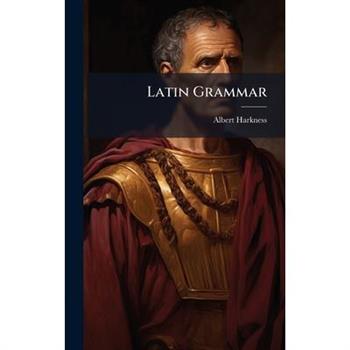
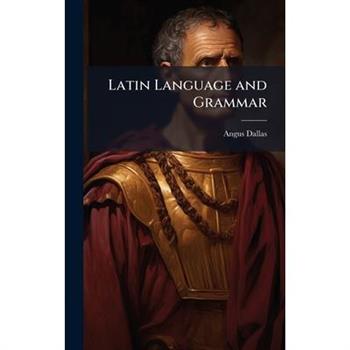
![The Eton Latin Grammar [Ed.] by G. Taylor The Eton Latin Grammar [Ed.] by G. Taylor](https://cdn.kingstone.com.tw/english/images/product/0528/9781023870528m.jpg?Q=38dcf)
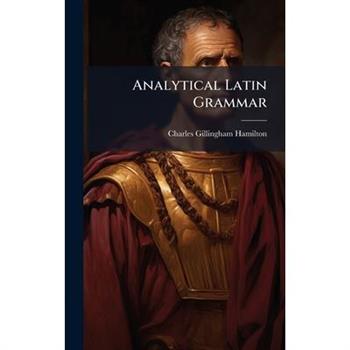
![The Eton Latin Grammar [Ed.] by G. Taylor The Eton Latin Grammar [Ed.] by G. Taylor](https://cdn.kingstone.com.tw/english/images/product/5004/9781023875004m.jpg?Q=54769)
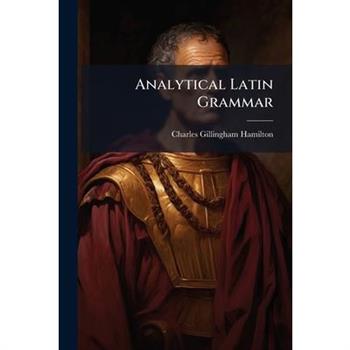
![Introductory Exercises On the Greek Language. [With] Key Introductory Exercises On the Greek Language. [With] Key](https://cdn.kingstone.com.tw/english/images/product/9859/9781023879859m.jpg?Q=93dc2)
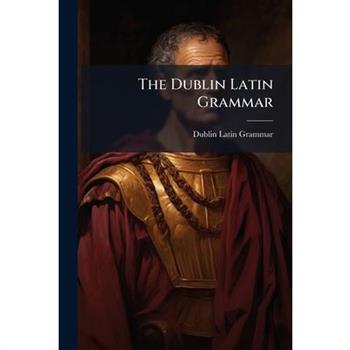


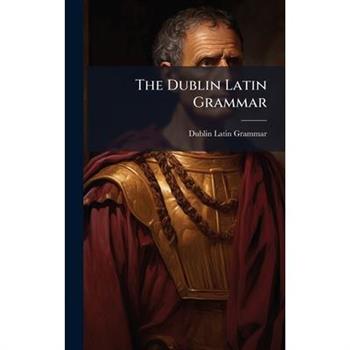
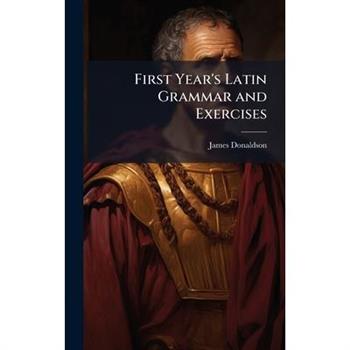
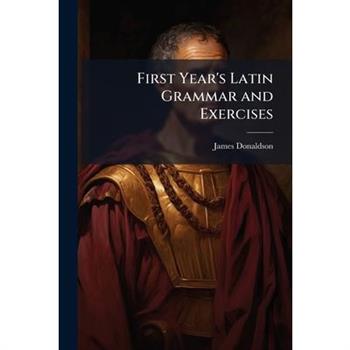
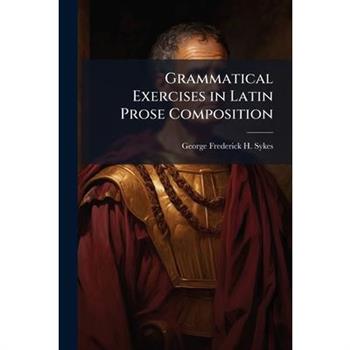
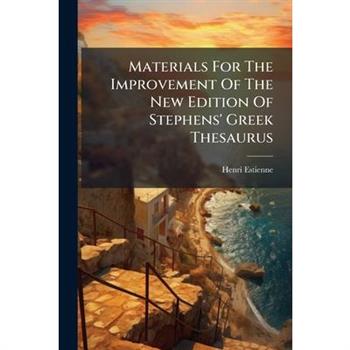
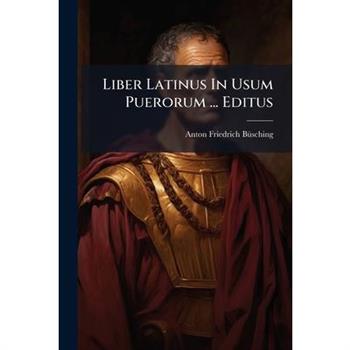
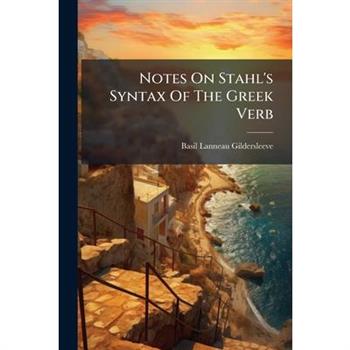

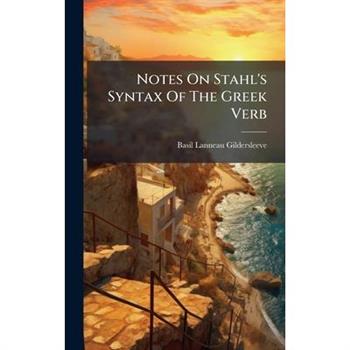
![Neuhebr瓣isches Und Chald瓣isches W繹rterbuch ?œber Die Talmudim Und Midraschim, Nebst Beitr. Von H.l. Fleischer. 4 Bde. [issued In 22 Pt.] Neuhebr瓣isches Und Chald瓣isches W繹rterbuch ?œber Die Talmudim Und Midraschim, Nebst Beitr. Von H.l. Fleischer. 4 Bde. [issued In 22 Pt.]](https://cdn.kingstone.com.tw/english/images/product/2710/9781024582710m.jpg?Q=8f81c)
![Neuhebr瓣isches Und Chald瓣isches W繹rterbuch ?œber Die Talmudim Und Midraschim, Nebst Beitr. Von H.l. Fleischer. 4 Bde. [issued In 22 Pt.] Neuhebr瓣isches Und Chald瓣isches W繹rterbuch ?œber Die Talmudim Und Midraschim, Nebst Beitr. Von H.l. Fleischer. 4 Bde. [issued In 22 Pt.]](https://cdn.kingstone.com.tw/english/images/product/6916/9781024586916m.jpg?Q=99add)
